See Theresa Hackett’s Unpredictable, Dripping Landscape-Inspired Paintings
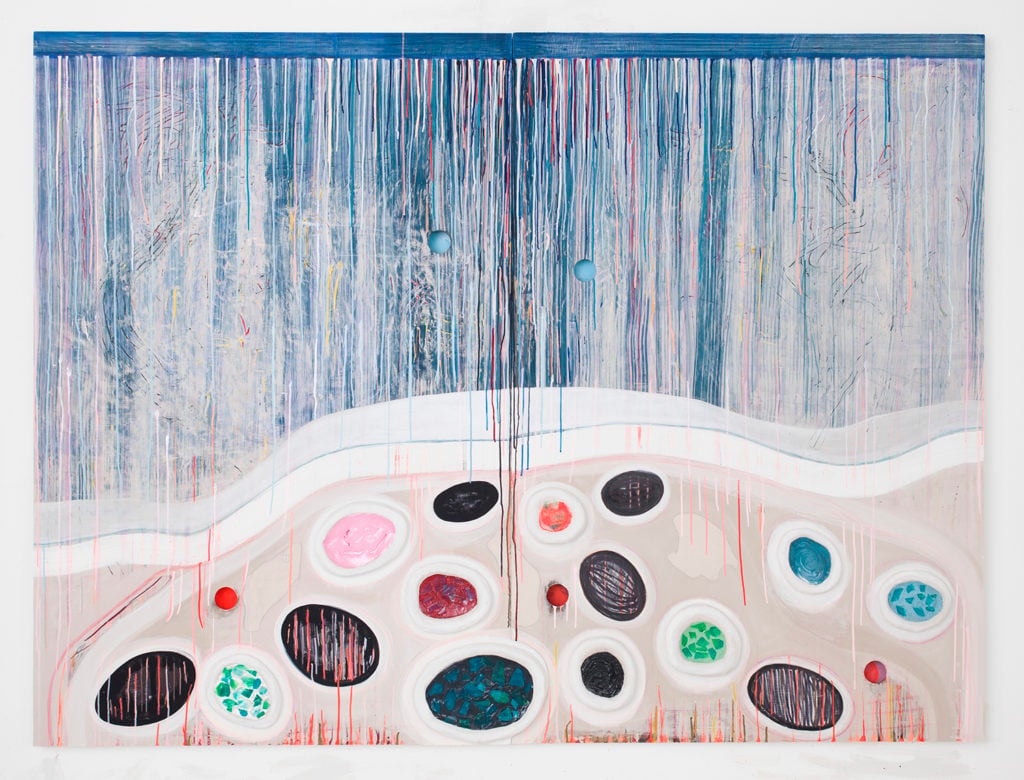

Taylor Dafoe

You might not know it by looking at them, but Theresa Hackett’s paintings are the product of an extremely labor-intensive process. She’ll often chip away at a single work over the course of several months—painting, scraping, cutting, and sanding it over and over again until it’s right.
How does she know when it’s right?
“The painting has to hold,” Hackett tells artnet News. “At some point, it has to have a life of its own and I can no longer be responsible for it. It has to go out in the world and be its own entity. At that point, if it doesn’t have integrity, then it’s a weak painting.”
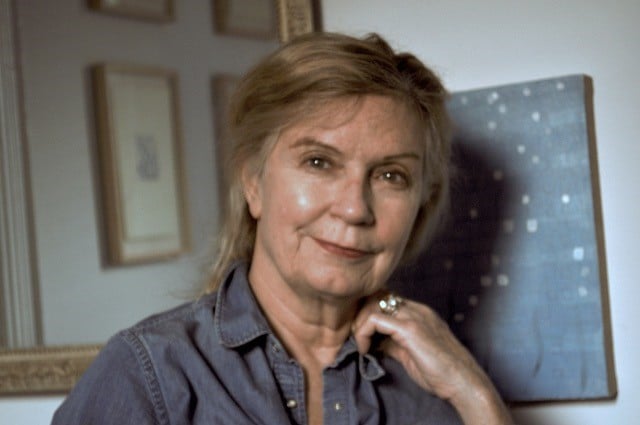
Theresa Hackett, 2018. Courtesy of the artist. Photo: Ray Manikowski.
The paintings in Hackett’s new show at New York’s High Noon Gallery, titled “Slippery Slope,” seem to be doing well on their own. The show features three large works on wood—each roughly six feet tall—as well as a series of smaller paintings on panels. Each features a combination of gestural marks and abstract forms, from dripping paint and floating oblong blobs to three-dimensional sculptures stuck on top. They look sickly, in a way, like the disintegrated remains of once-pristine paintings.
“Slippery Slope” is an apt title for the show. The forms in all her works, recognizable or not, appear as if they’re on the verge of sliding off the painting and into the exhibition space. This is literally the case in one of the larger works, Melting Down (2018), in which a limp, wormy tube droops from the bottom of the wood panel and rests on the gallery floor—like the painting’s entrails.
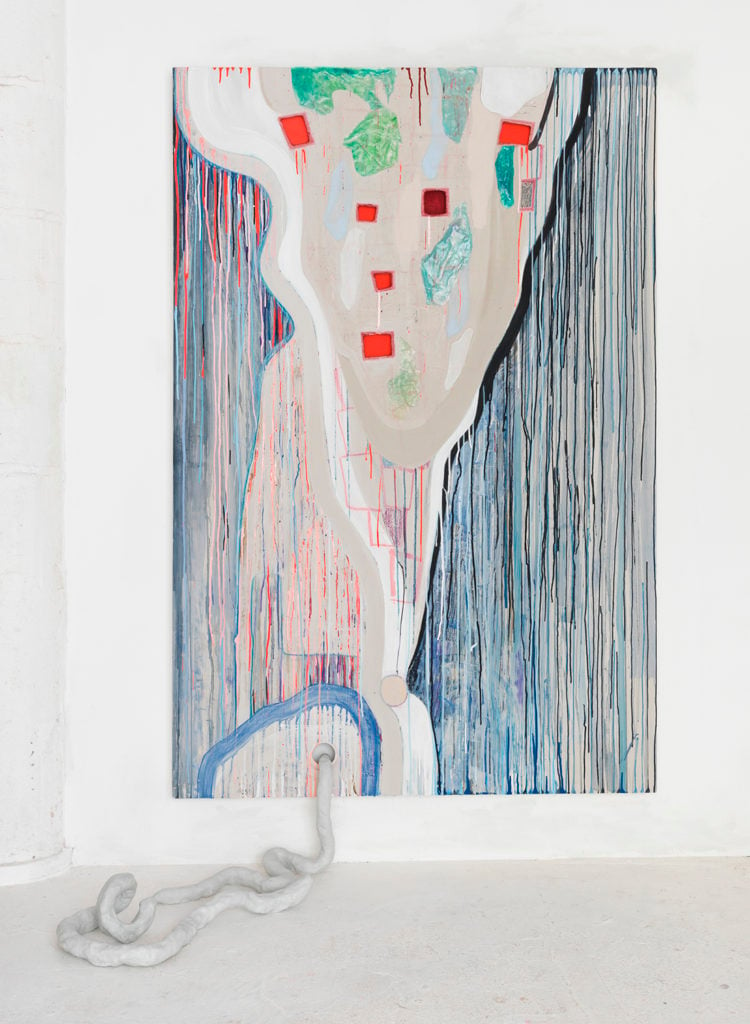
Theresa Hackett, Melting Down (2018). Courtesy of High Noon Gallery.
Hackett’s materials are similarly unpredictable. In any given piece, you can find a variety of ingredients—matte patches of acrylic paint next to glossy streaks of resin, say, or lines of permanent marker intersected by glitter, clay, or crayon—the list goes on. Her signature material, used in all of her works, is diatomaceous earth, a fine organic powder consisting of crushed-up diatom fossils. The artist adds gesso to it to create a paint-like paste which is both smooth and easily scraped. It also gives the paintings a distinct taupe base color, like the hue of sand or dried soil—both of which are appropriate referents given the work’s thematic connection to land.
Indeed, look at Hackett’s work long enough and you’ll realize that she’s working with the tropes of traditional landscape painting. For her, it’s about playing with the conventions of the genre and constantly subverting expectations about perspective.
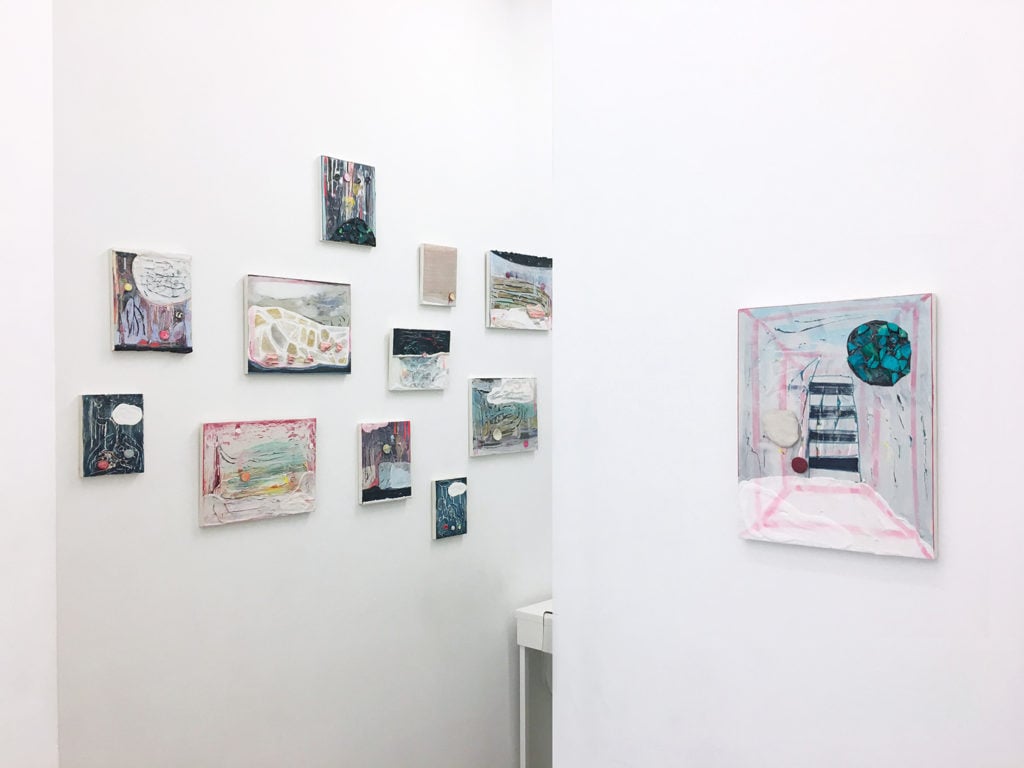
Installation view of “Slippery Slope” at High Noon Gallery (2018). Courtesy of High Noon Gallery.
“We’re not always aware of it, but the landscape perspective is our default way of viewing,” Hackett says. “We’re grounded in the landscape at all times. I want to play with that familiarity. It’s like when you get off the subway and come out from underground and for a second you have that moment of fear. Even if you’ve lived in New York forever and know where you are, for some reason everything feels turned around. That’s a nice place to make a painting.”
Much of Hackett’s imagery in the show is liminal in nature. She focuses on the thresholds between spaces—a distorted horizon line dividing land and sky, or a cross-section of soil separating the earth and the open air. Her paintings capture the cyclicality of organic life, with a particular focus on the process of decay.
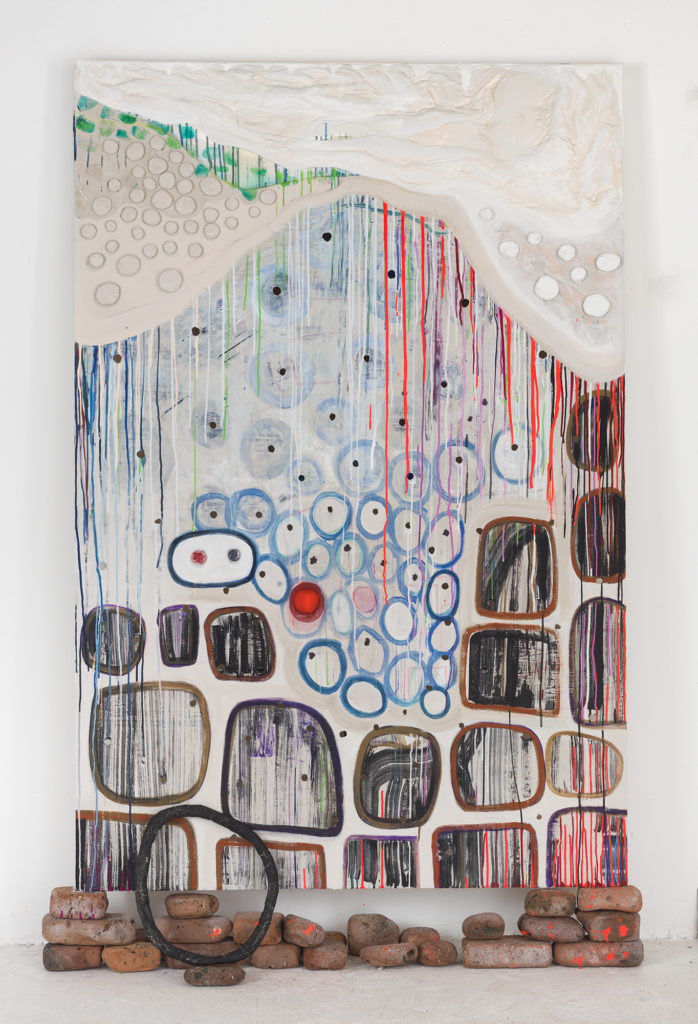
Theresa Hackett, A Trail of Messages (2018).
For instance, see A Trail of Messages (2018)—another large painting depicting a cross-section of earth. The top third of the work is bright and open with clouds and grass, while the remainder of the composition is devoted to what’s underneath the surface of the earth. There, lines of paint drip down to a grouping of smaller rocks, which give way to a group of big boulders at the bottom.
In the gallery, the panel sits on stacks of bricks, which the artist sourced from the shore of the East River, near her studio in DUMBO. The bricks, round and water-worn, are crumbling; they’re decaying in front of our eyes, complementing the action in the painting above.
In front of Hackett’s work, you become acutely aware that everything, from the gallery walls to the paintings to the people in front of them, is in a stage of decay. It’s not a sign of sickness, but a natural phase of life.

Installation view of “Slippery Slope” at High Noon Gallery (2018). Courtesy of High Noon Gallery.
“Slippery Slope” will be on view at High Noon Gallery in New York through Sunday, April 22. A launch party for the show’s catalogue will take place at the gallery on Saturday, April 21, from 3–6 pm.